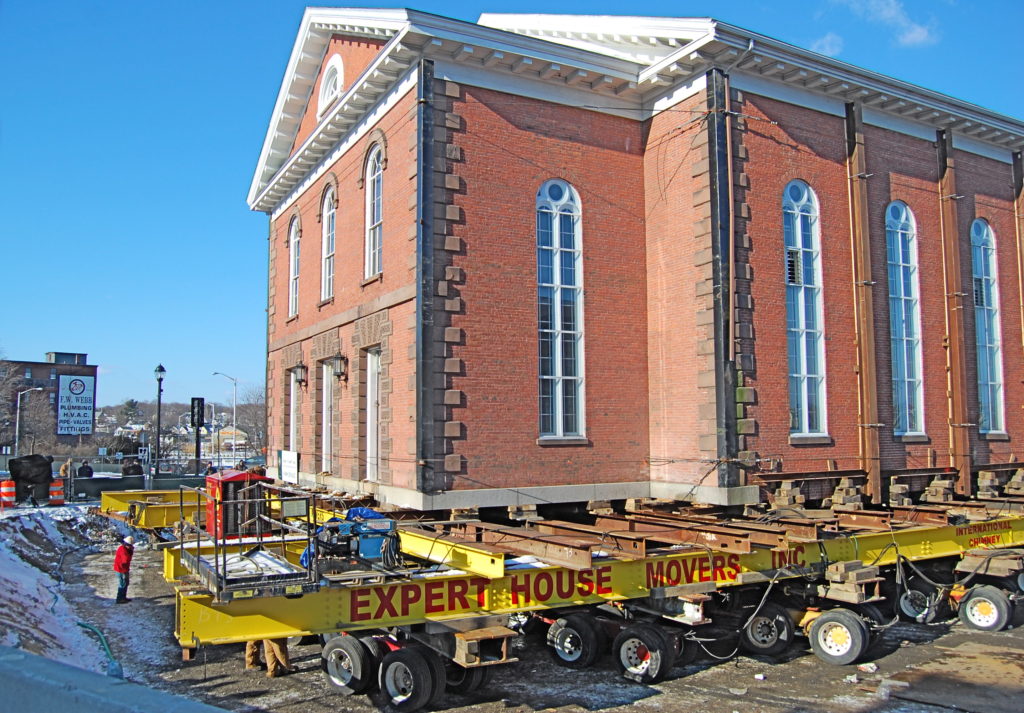Source: https://www.pexels.com/photo/photo-of-a-man-and-woman-using-a-laptop-computer-1647905/
Thanks to popular television shows like The Block, an increasing number of landlords and property investors are converting run-down commercial buildings into prime residential real estate. Here’s how you can get in on this trend.
Australian TV hit The Block has given plenty of landlords, property investors, and buyers some food for thought. In 2014, a former cinema, church, and office space in Melbourne was given a facelift and converted into luxury residential apartments leading to great financial results. Another successful conversion in the next series saw the contestants breathe new life into an old office block with similar success. As more and more successful commercial turned residential developments pop up, it has become clear that transforming commercial spaces into residential properties offers plenty of bang for your buck. Here are a few tips to bear in mind before being a commercial to residential conversion.
1. Find the right property
A successful commercial turned residential development begins with finding the right property. Is it in a great location? Is it close to essential amenities like public transport, schools, supermarkets, and good roads? Is the area suitable for a long-term building project? Always do your research and request the help of a commercial real estate agent to make sure that the property is the right one for your building plans.
2. Get to know Zoning rules
Once you have a commercial building in mind, the next step is to investigate if there are are planning or zoning rules that could affect your plans. Zoning constraints could potentially throw a spanner in the works and may deem the building ineligible for redevelopment. Check local zoning laws online and contact your local council to confirm if there are any constraints you should know about due as a result of change of use.
3. Make sure it’s up to code
Before you purchase any property, it’s always vital to check that it’s up to code. This is especially important when transforming a commercial building into a residential one. As commercial buildings are designed and built with different uses in mind, there are different requirements in relation to structuring, electricity and water, and exits. As a developer, you will need to abide by local laws and ensure the property meets all residential standards.
4. Calculate the cost of converting carefully
Converting a commercial building to a residential one is a long-term investment and will require upfront costs. When budgeting for the development, make sure that you factor in all of these expenses. For example, application fees for rezoning, costs of structural changes, rewiring, layout changes, etc, may all be costs that you need to pay at the beginning of the conversion. You will normally need to pay a reliable contractor to help you come up with a realistic budget and make sure that the property is safe enough to operate as a residential building.
Don’t forget the exterior space when calculating your budget. Will there be landscaping? Do you need to build a car park? All of these costs are essential and need to be considered before buying the property.
Renovation Tips For Your Conversion
There are two main pillars to consider when renovating a commercial building; functionality and aesthetics. Here are a few ways to set your renovation up for success.
1. Make sure it’s accessible
When renovating a commercial building like an office space into a residential one, think about accessibility. Especially if you plan to rent the property to tenants. Is the space wheelchair-friendly? Do you need to install ramps? If the property was used as an industrial space, it might be wise to contract a trusted specialist like www.sdlifts.co.uk to replace freight lifts and to install disabled lifts and wheel-chair friendly lifts in the property.
If you plan to convert the property for your own personal use, think about how you live and make sure the building works with your lifestyle and needs. Is it child-friendly? Will the layout serve as a home?
2. Use what’s already there
Rather than fighting against the property, work with it. Commercial buildings often have design features such as high ceilings, exposed brick, or industrial piping. Try to incorporate these into the redesign to give your property an edge and retain a nod to its previous form.
3. Prioritise natural light
One of the biggest selling factors when it comes to residential properties is natural light. More often than not, commercial buildings have fewer windows, sources of natural light, and outdoor spaces. Factor this in during the design process and focus on enhancing natural light in common areas.
4. Be creative with decor
While it’s great to keep a nod to the building’s original use by leaving some exposed brick, industrial copper piping, or high ceilings, it’s important to create a space that feels homely. Get creative and mix industrial elements with luxurious textures, earthy tones, and soft furnishings to create a contrast between the industrial and the homely elements.
Key Takeaways
Converting a commercial building into a contemporary living space is an exciting project. Whether you plan to create a large family home or residential apartments to sell or rent, renovating commercial buildings is a great way to get creative and build an alternative living space. Before taking on a project like this, make sure that you do your research and factor in all the costs and necessary permissions to develop your property.



